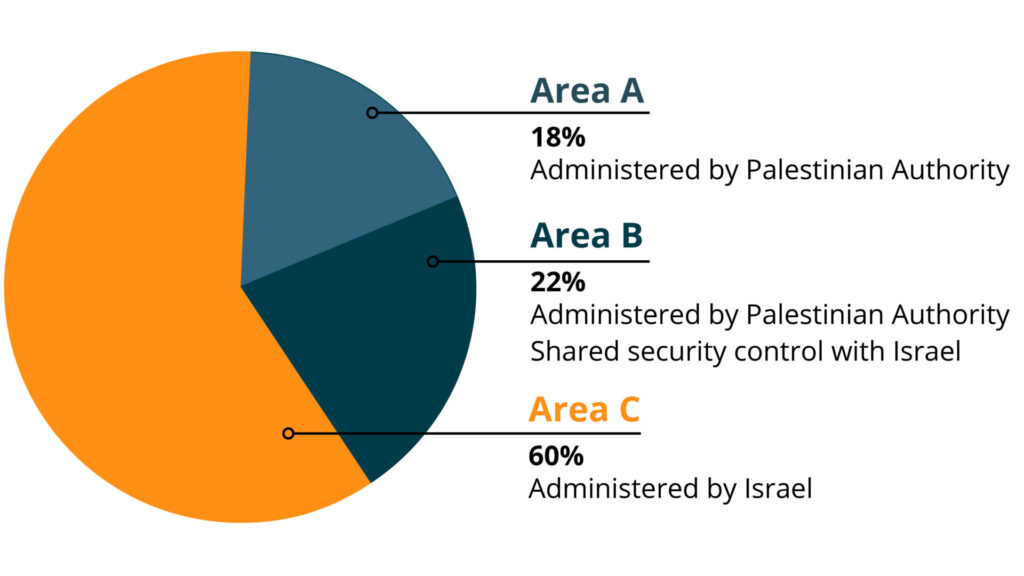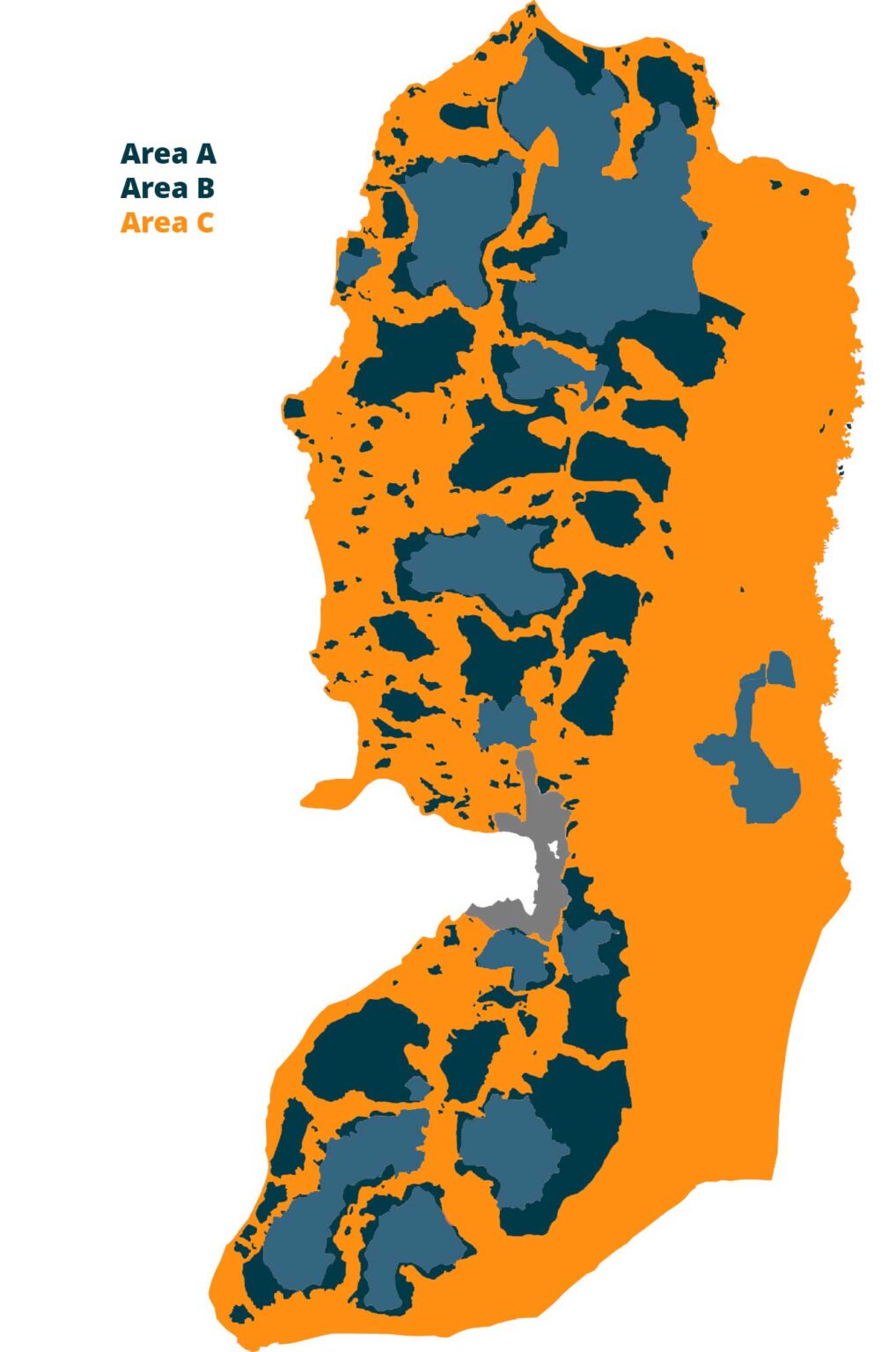What are Area A, Area B, and Area C in the West Bank?
The 1995 Oslo II Accord established the administrative division of the Palestinian West Bank into areas A, B, and C as a transitional arrangement, pending a final status agreement. Oslo II intended for the divisions to be temporary, with full jurisdiction of all three areas gradually transferred to the Palestinian Authority over time. Instead, the divisions persist, with Area A administered by the Palestinian Authority, Area C by Israel, and Area B under joint control.


Area A
Under the terms of the Oslo agreement, Area A is under Palestinian administrative and police control. It constitutes 18% of the West Bank. Of the 3 areas, Area A is the most densely populated. Although under Palestinian control, much of the available land for building lies on borders with Area C.
Area B
The Palestinian Authority exercises administrative control over Area B but shares security control with Israeli authorities. This area makes up about 22% of the West Bank. Palestinian administrative or civil control of the area includes education, economic, and health sectors.
The majority of Palestinians in the West Bank live in areas A or B. These areas are not contiguous: Area C divides Areas A and B into hundreds of separate segments.
Area C
Area C, which Israel administers, covers over 60 percent of the West Bank. An estimated 300,000 Palestinians live in 532 residential areas located partially or fully in Area C, along with some 400,000 Israeli settlers residing in approximately 230 settlements. In addition, around 30% of Area C is a designated “firing zone” for military training – 38 Palestinian communities are located within these training areas. Altogether, 60% of Area C is made up of these firing zones, other military land, or state land and nature reserves. Palestinian residents struggle to obtain land permits for housing and farming in the remaining 40%.
A third of Palestinian communities in Area C lack a primary school, forcing children to travel or walk long distances to reach the nearest school. More than 70% of communities in Area C are not connected to a water network and rely on tankered water at vastly increased cost. 95,000 people receive fewer than 50 liters of water per capita per day – half of the minimum amount recommended by the World Health Organization. Nearly half of Area C Palestinian communities report that their access to emergency and basic healthcare is hampered by the long distances to the nearest clinic or the need to pass through checkpoints.
Map courtesy SoWhAt249 [CC BY-SA 4.0], via Wikimedia Commons
Apart from the administrative divisions established by the Oslo Accords, the West Bank is apportioned into 11 governorates. Learn about Anera's long history of work across Palestine's West Bank.

